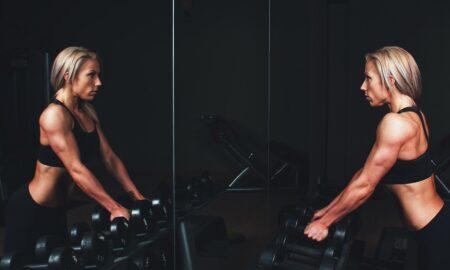Q: I’m 55 years old, and I’ve been training with weights for 10 years. I can’t get my arms to grow any more (they’re 15 inches in circumference). I’ve tried every exercise, and nothing seems to work. My biceps are very flat-looking, and I can barely see the triceps muscles. What do you think I’m doing wrong?
A: Where there’s a will, there’s a way. I believe that your musculoskeletal measurements determine which exercises you should do for each bodypart. Let’s throw out the notion that there are three body types. Instead, look at each joint that your muscles attach to. Then look at the amount of muscle and how it’s shaped—in this case, the biceps, triceps and forearms.
The larger your wrist, ulna, radius and humerus, the more likely you have adequate muscle and the potential to support a lot of weight with training. It’s all relative to the frame—in this case, the bones of your arms.
Let’s say you have fairly large bones. Let’s also say you have an average to above average number of muscle fibers. I would predict that regular straight-bar curls—as heavy as you can handle for 10 fairly strict reps—should be your number-one exercise for biceps. Do four sets and then move to straight-bar preacher curls, ensuring that your humerus rests against a pad that’s 90 degrees to the floor. The vertical pad makes the pulling action all biceps. Working on a 45 degree incline won’t give you the stimulation necessary to make those biceps pop. Do three sets of 10 reps.
Finally, execute some type of dumbbell concentration curl. You can do it with the dumbbell hanging away from your body (à la Arnold in “Pumping Iron”) or with the working arm resting on the inside of your thigh. The key here is isolation and supination. Turn your hand as far as possible to the pronated position at the peak of contraction. If, say, you’re working your right arm, put your left hand on your right biceps and turn the wrist of the right arm clockwise as far as you can. Notice that the more you turn your wrist to the pronated position, the more the biceps moves upward. That’s why it’s best to use a straight bar for curling. Say good-bye to flat biceps after three months of doing those three exercises once a week.
As far as the triceps are concerned, I like to challenge people who have what they think are weak triceps with reverse-grip bench presses. Yes, reverse grip—with a spotter to lift the bar off the rack and put it back on. Use as much weight as you can to get 10 to 12 reps for four heavy sets. Be sure to lower the bar fairly slowly and allow it to touch the lower part of your pectorals; drive it up immeditely. Use a grip that will make your elbows just pass your torso as you slowly lower the bar.
Reverse-grip benches will fatigue the triceps if you do them properly, so follow with strict pushdowns. Use a straight bar, and keep your elbows in. I see many bodybuilders doing this exercise with their elbows out. Keep your elbows close to your body, and let the bar come up just above parallel to the floor. Do three sets of 12 reps.
The last movement for triceps is standing cable overhead pushes with a small bar. Do them standing so that your forearms collapse onto your biceps as the handle moves behind your head. Then push upward and lock the triceps for a second. Do three sets of 10 to 12 repetitions. Hello, horseshoe-shaped triceps!
Train your forearms with wrist curls. Use a relatively thick, heavy bar, with your lower arms resting on your thighs when you’re seated on the end of a flat bench. The bar shouldn’t move more than a few inches. Start with your wrists straight, hands on the same plane as your forearm, not down. Then wrist-curl the bar inward as far as possible toward the belly of your forearms. Work at a fast pace for 20 to 25 reps and don’t stop until your forearms burn like a gasoline-drenched fire. Do three sets, and after each one use another, lighter straight bar and do reverse wrist curls—attacking the radial head. Use the same pace, and go for the burn. Don’t move the bar too much, and always grip it as tightly as possible. Keep it moving.
Editor’s note: Contact Paul Burke via e-mail at [email protected]. Burke has a master’s degree in integrated studies from Cambridge College in Cambridge, Massachusetts. He’s been a champion bodybuilder and arm wrestler, and he’s considered a leader in the field of over-40 fitness training. You can purchase his books, Burke’s Law—a New Fitness Paradigm for the Mature Male and Paul Burke’s Neo-Dieter’s Handbook, from Home Gym Warehouse. Call (800) 447-0008, or visit www.Home-Gym.com. His “Burke’s Law” training DVD is also now available.




















You must be logged in to post a comment Login